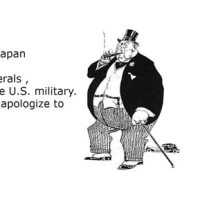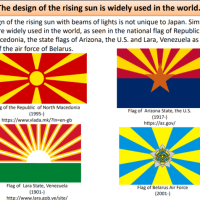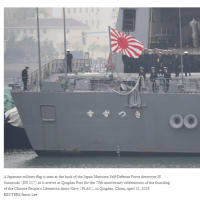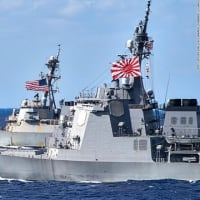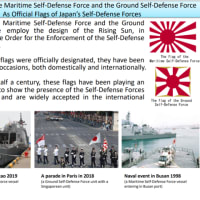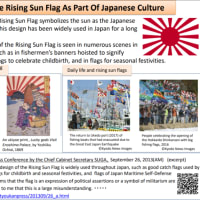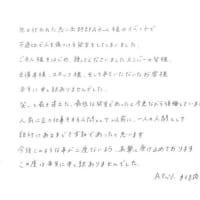反論動画、閲覧200万回突破=計8カ国語公開へ-韓国
Tweet
2019年01月07日 ということで、当分この投稿も前に出しておきます。
1 Why did Japanese aircraft conduct "threatening low flight at the sight of humanitarian rescue"?
The question presupposes wrong assumptions.
過去のアメリカ海軍の認識「高度180m距離500m程度の接近飛行をされても全く脅威ではない」
JSF | 軍事ブロガー
2018/12/30(日)
It is clear that if this Russian bomber was not threatening, Japanese patrol aircraft was much less threatening.
Russian Media Claims Su-24 Bomber Forced US Navy Ship To Abandon Mission, Pentagon Responds With Footage Of Peaceful Encounter
By Thomas Barrabi @TBarrabi
06/02/15 AT 8:55 AM
It was a peaceful encounter, so was the flight of Japanese patrol aircraft
The sky was clear, the South Korean warship had already found North Korean ship. It didn't need to use any radar.
What is not clear is what the North Korean vessel was doing. Was it conducting illicit ship-to-ship transfers or what ?.
In any case, Japanese aircraft was conducting a peaceful patrol.
Why did the South Korea warship lock its fire-control radar onto the Japanese patrol aircraft which was keeping watch over North Korean illicit ship to ship transfer?
2 Japan claims to have complied with international law-is it true?
True.
レーダー照射防衛省資料 自衛隊機は国際民間航空条約の適用対象?
ICAO's convention states it does not apply to a state aircraft.
But according to UNITED NATIONS CONVENTION ON THE LAW OF THE SEA
Since the freedom of flight should be exercised with due regard for the interests of other States, the convention was applied mutatis mutandis to the patrol aircraft.
As a side, the Japanese ministry of defense does not claim that Japanese aircraft was flying at the altitude of 150 m; it is saying the patrol aircraft was flying at higher than 150 m and it is not illegal.
3 Korean destroyer didn't illuminate STIR toward Japanese aircraft.
So was the P-1 pilot making up the FC antenna lock on for reasons that no one can fathom?
Korean media claims that it was using STIR
In any case, Japan should disclose the relavant flight record so everyone concerned will be convinced.
4 Japanese aircraft communication was unclear.
You can hear "this is Japan navy.
If Korean ship can't catch this signal, is it of any use as a warship?
In addition, if the Korean warship felt threatened by the patrol aircraft, why didn't it send a message and asked Japanese aircraft what it is doing.
Tweet
2019年01月07日 ということで、当分この投稿も前に出しておきます。
韓国国防省のビデオ、英語版。https://t.co/93oIbhAMAp
— buvery (@buvery) 2019年1月4日
1 Why did Japanese aircraft conduct "threatening low flight at the sight of humanitarian rescue"?
The question presupposes wrong assumptions.
過去のアメリカ海軍の認識「高度180m距離500m程度の接近飛行をされても全く脅威ではない」
JSF | 軍事ブロガー
2018/12/30(日)
It is clear that if this Russian bomber was not threatening, Japanese patrol aircraft was much less threatening.
Russian Media Claims Su-24 Bomber Forced US Navy Ship To Abandon Mission, Pentagon Responds With Footage Of Peaceful Encounter
By Thomas Barrabi @TBarrabi
06/02/15 AT 8:55 AM
The video showed a purportedly unarmed Russian Su-24 bomber fly within about 1,600 feet of the USS Ross, a guided-missile destroyer active in the Black Sea near Crimea. U.S. officials confirmed the bomber was one of several Russia aircraft spotted in the ship’s vicinity
The Russian military and the U.S. Navy never made contact during the encounter, Warren said, adding that the Ross did not “deviate from its mission” and that it had traveled through international waters.
It was a peaceful encounter, so was the flight of Japanese patrol aircraft
The sky was clear, the South Korean warship had already found North Korean ship. It didn't need to use any radar.
What is not clear is what the North Korean vessel was doing. Was it conducting illicit ship-to-ship transfers or what ?.
In any case, Japanese aircraft was conducting a peaceful patrol.
Why did the South Korea warship lock its fire-control radar onto the Japanese patrol aircraft which was keeping watch over North Korean illicit ship to ship transfer?
2 Japan claims to have complied with international law-is it true?
True.
レーダー照射防衛省資料 自衛隊機は国際民間航空条約の適用対象?
ICAO's convention states it does not apply to a state aircraft.
But according to UNITED NATIONS CONVENTION ON THE LAW OF THE SEA
Article87
Freedom of the high seas
1. The high seas are open to all States, whether coastal or land-locked. Freedom of the high seas is exercised under the conditions laid down by this Convention and by other rules of international law. It comprises, inter alia, both for coastal and land-locked States:
(a) freedom of navigation;
(b) freedom of overflight;
2. These freedoms shall be exercised by all States with due regard for the interests of other States in their exercise of the freedom of the high seas, and also with due regard for the rights under this Convention with respect to activities in the Area.
Since the freedom of flight should be exercised with due regard for the interests of other States, the convention was applied mutatis mutandis to the patrol aircraft.
As a side, the Japanese ministry of defense does not claim that Japanese aircraft was flying at the altitude of 150 m; it is saying the patrol aircraft was flying at higher than 150 m and it is not illegal.
3 Korean destroyer didn't illuminate STIR toward Japanese aircraft.
So was the P-1 pilot making up the FC antenna lock on for reasons that no one can fathom?
(4th LD) S. Korea voices 'deep concern, regrets' about Japan's footage release amid radar spat - wow. So the P-1 pilot is making up the FC antenna lock on for reasons that no one can fathom, whilst executing a manoeuvre that could be seen as provocative. https://t.co/42tcrTvf0E
— Alessio Patalano (@alessionaval) 2018年12月29日
Korean media claims that it was using STIR
In any case, Japan should disclose the relavant flight record so everyone concerned will be convinced.
4 Japanese aircraft communication was unclear.
You can hear "this is Japan navy.
If Korean ship can't catch this signal, is it of any use as a warship?
In addition, if the Korean warship felt threatened by the patrol aircraft, why didn't it send a message and asked Japanese aircraft what it is doing.











